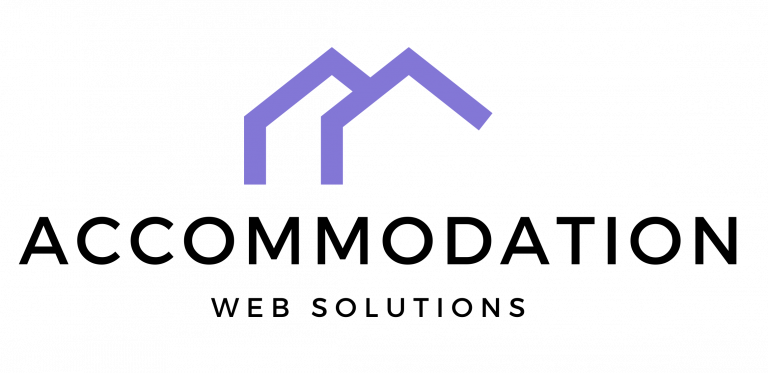Interactive content has become a powerful tool for engaging with website visitors and driving traffic to accommodation websites. Unlike traditional static content, interactive content encourages users to actively participate and engage with the website, leading to a more immersive and memorable experience. This type of content can take many forms, including quizzes, polls, calculators, interactive maps, and more. By providing users with a more dynamic and engaging experience, accommodation websites can capture the attention of potential guests and encourage them to explore the website further. Interactive content has the power to not only drive traffic to accommodation websites but also to increase user engagement and ultimately lead to more bookings.
In today’s digital age, where attention spans are shorter than ever, interactive content has become a valuable tool for capturing the interest of website visitors. By providing users with an interactive experience, accommodation websites can stand out from the competition and create a more memorable and engaging user experience. This type of content encourages users to actively participate and engage with the website, leading to increased time spent on the site and a higher likelihood of conversion. As a result, interactive content has the power to drive traffic to accommodation websites and ultimately increase bookings.
How Interactive Content Drives Traffic to Your Accommodation Website
Interactive content has the ability to drive traffic to accommodation websites in a number of ways. Firstly, interactive content is highly shareable, meaning that users are more likely to share it with their friends and followers on social media. This can lead to an increase in referral traffic as more people are directed to the website through shared interactive content. Additionally, interactive content can improve search engine rankings as it encourages users to spend more time on the website, reducing bounce rates and signalling to search engines that the website is valuable and engaging. This can lead to higher organic search rankings and increased visibility in search engine results pages.
Furthermore, interactive content can also be used as a lead generation tool, capturing the contact information of potential guests in exchange for access to the interactive content. This allows accommodation websites to build a database of leads that can be nurtured through targeted marketing efforts, ultimately driving more traffic and bookings. By providing users with an interactive and engaging experience, accommodation websites can attract more visitors and encourage them to explore the website further, ultimately leading to an increase in traffic and bookings.
Types of Interactive Content That Work Best for Accommodation Websites
There are several types of interactive content that work particularly well for accommodation websites. One popular option is interactive maps, which allow users to explore the property and surrounding area in a dynamic and engaging way. This can help potential guests get a better sense of the location and layout of the accommodation, ultimately leading to more bookings. Another effective type of interactive content is quizzes, which can be used to engage users and provide them with personalised recommendations based on their responses. This can help potential guests find the perfect accommodation option for their needs, ultimately driving more bookings.
Additionally, calculators can be a valuable tool for accommodation websites, allowing users to input their travel dates and preferences to receive personalised pricing information. This can help potential guests understand the cost of their stay and make informed booking decisions. Finally, virtual tours are another popular form of interactive content for accommodation websites, allowing users to explore the property in a 360-degree immersive experience. This can help potential guests get a better sense of the accommodation and ultimately lead to more bookings.
Tips for Creating Engaging Interactive Content
When creating interactive content for accommodation websites, it’s important to keep a few key tips in mind. Firstly, it’s important to ensure that the interactive content is relevant and valuable to the target audience. This means understanding the needs and preferences of potential guests and creating interactive content that addresses these needs in a meaningful way. Additionally, it’s important to keep the user experience in mind when creating interactive content, ensuring that it is intuitive and easy to use. This can help ensure that users have a positive experience with the interactive content and are more likely to engage with it.
Furthermore, it’s important to promote the interactive content across various channels, including social media, email marketing, and on the website itself. This can help increase visibility and drive more traffic to the interactive content, ultimately leading to more bookings. Finally, it’s important to track and measure the performance of the interactive content in order to understand what is resonating with users and what can be improved upon in future iterations. By following these tips, accommodation websites can create engaging interactive content that drives traffic and ultimately leads to more bookings.
Incorporating Interactive Content into Your Website Strategy
Incorporating interactive content into your website strategy can be a valuable way to drive traffic and increase bookings for your accommodation website. One effective way to do this is by creating a dedicated section on the website for interactive content, making it easy for users to find and engage with. This can help increase visibility and encourage more users to explore the interactive content, ultimately leading to more bookings. Additionally, it’s important to promote the interactive content across various channels, including social media, email marketing, and on the website itself. This can help increase visibility and drive more traffic to the interactive content.
Furthermore, it’s important to consider how interactive content can be integrated into other areas of the website, such as the booking process or property listings. For example, interactive maps can be used to showcase the location of each property, while calculators can be used to provide pricing information during the booking process. By integrating interactive content throughout the website, accommodation websites can create a more engaging and immersive user experience that ultimately leads to more bookings.
Measuring the Success of Your Interactive Content
Measuring the success of your interactive content is an important part of understanding its impact on driving traffic and increasing bookings for your accommodation website. One key metric to track is engagement, including metrics such as time spent on page, click-through rates, and social shares. This can help you understand how users are interacting with the interactive content and identify areas for improvement. Additionally, it’s important to track conversion rates from the interactive content, including how many users go on to make a booking after engaging with the interactive content.
Furthermore, it’s important to track how the interactive content is impacting overall website traffic and search engine rankings. This can help you understand how the interactive content is driving traffic to your website and increasing visibility in search engine results pages. By tracking these metrics, accommodation websites can gain valuable insights into the impact of their interactive content and make informed decisions about future content creation and promotion strategies.
Case Studies: How Accommodation Websites Have Used Interactive Content to Drive Traffic
There are numerous examples of accommodation websites that have successfully used interactive content to drive traffic and increase bookings. One example is a luxury resort that created an interactive map showcasing all of its amenities and nearby attractions. This map was highly shareable on social media and led to a significant increase in referral traffic as users shared it with their friends and followers. Additionally, the resort saw an increase in time spent on the website as users explored the interactive map, ultimately leading to more bookings.
Another example is a boutique hotel that created a quiz allowing users to find their perfect room based on their preferences. This quiz was highly engaging and led to an increase in leads as users provided their contact information in exchange for their quiz results. The hotel was able to nurture these leads through targeted marketing efforts, ultimately driving more traffic and bookings. These case studies demonstrate how accommodation websites can use interactive content to drive traffic and increase bookings, ultimately leading to a more successful online presence.
In conclusion, interactive content has become a powerful tool for driving traffic and increasing bookings for accommodation websites. By creating engaging and immersive experiences for users, accommodation websites can capture the attention of potential guests and encourage them to explore further. By incorporating various types of interactive content into their website strategy and measuring its success, accommodation websites can gain valuable insights into how it is impacting their online presence. Ultimately, by following best practices for creating engaging interactive content, accommodation websites can drive more traffic and increase bookings, leading to a more successful online presence.




